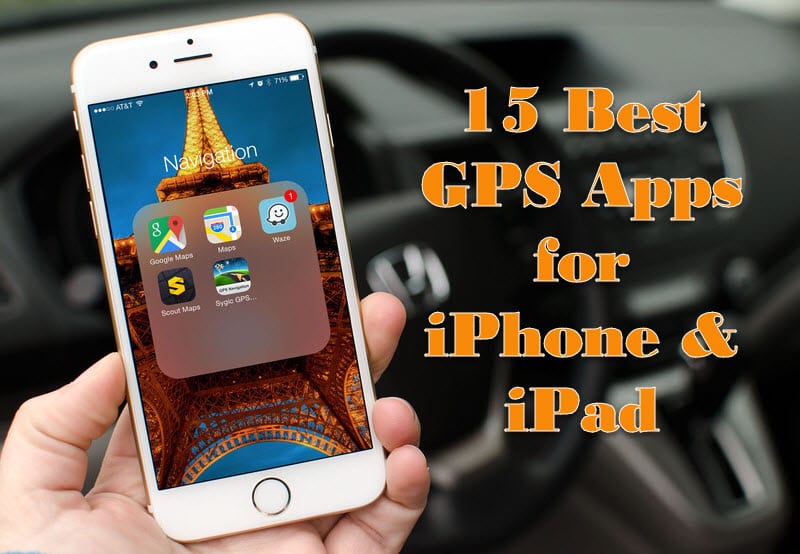What Happened Tomtom App For Mac

The TomTom MySports Mac app doesn’t make it easy to transfer music onto the watch. If you prefer to stream music instead of buy it, you’re out of luck here. The Spark doesn’t have streaming. Filed Under: Mac Tagged With: 5-star, App store, Apps, GPS, iPhone, iPhone 4, iTunes, TomTom Leave a Reply Cancel reply Your email address will not be published. So when I first had it and installed the Via LIve software on my Mac seemingly downloaing POi's etc was 'coming soon' 7 months on my device has been constantly rebooting itself whilst I am trying to use it. What a pain in the ass.
At the end of 2007, TomTom was on top of the world. The Dutch satnav maker had taken record revenues of €634m (£445m) in the Christmas quarter, sold a record 4.2m devices, and was making a net profit of €107m, an all-time high. The fall, when it came, was going to be hard, and it took less than two years: by the first quarter of 2009, revenues had slumped to €213m and it recorded a net loss of €37m.
What happened? Corinne Vigreux, the chief executive who is also one of TomTom’s four co-founders, puts it down to two factors: “The economic crisis in 2008 – plus smartphones became popular, and Google began offering navigation for free on [Android-powered] phones.”
The arrival of a search engine company in the field of in-car navigation is not the sort of threat you would normally plan for. But Vigreux, 50, has seen enough change in the technology business to know that “your competitors come from different fields – they’re not the ones you expect them to be. Hilton Hotels would never have expected their margins would be eaten away by Airbnb. Every company starts with a blank sheet of paper, and some of them then arrive like a tsunami.”
For TomTom, survival would quickly become a matter of adapting to the new reality, in which Google could undermine the paid-for satnav business – which was then selling millions of units each quarter – with software that would quickly be in everyone’s hands. But where would the money come from?
TomTom had already decided that the future lay in providing map data and telematics for vehicle makers. In July 2007, it made a €2bn offer for Tele Atlas, the company’s map data supplier, which was one of only two independent mapping companies (and also supplied Google). In October 2007, Nokia bid €5.7bn for Navteq, the other independent. US-based Garmin tried to snatch Tele Atlas, but a brief bidding war saw TomTom prevail with a €2.9bn bid; the deal closed in June 2008.
Nokia relaunches its HERE maps and navigation app for iOS
But the stock market did not like TomTom’s purchase, which was funded by debt and a new share issue. Its shares plunged from their high of €64.80. At the start of 2009, the company wrote off more than €1bn on the Tele Atlas purchase. Shares hit an all-time low of €2.84.
For Vigreux, however, reinvention and building from the ground up is what she is used to. Her first managerial role was running exports at Psion, the iconic and hugely influential British technology company, in the 1990s. She travelled widely, which was her original aim in getting into business. “North Africa, Israel, Europe,” she said, having joined Psion from business school in 1987.
Psion was a stalwart of British technology, producing a much loved handheld computer series that rivalled the Palm, from the US, in the 1990s. But the rise of mobile phones pushed it to a software-only path: its Symbian software became the basis of the first successful range of smartphones, from Nokia.
Vigreux is following a similar route. After four years at Psion – “it was one of the most interesting tech startups around; we learned a lot, there was a bunch of smart people” – she moved to Holland to join a software distributor for the Psion and other handhelds, and then helped set up TomTom in 1991. Initially, it made business-facing products for meter reading and barcodes for the popular handhelds – Palm Pilot, Compaq iPaq and Psion Series 5. Smartphones were not yet in use.

At first, it wrote mapping applications for the handhelds, squeezing data into tiny (by today’s standards) amounts of storage. “It was very difficult to put everything into one product; we had a city [map] product, but we were already very good at compressing data so we could fit it in.”
The company then saw an opportunity to make mapping devices for consumers. Before May 2000, civilian GPS systems were accurate to within only 100 metres; only the military could get its “full” accuracy of a few metres. But a Bill Clinton-enacted change made it open, and Vigreux and the team at TomTom saw an opportunity.
Rather than having to rely on people who already owned expensive PDAs, they realised they could sell them dedicated objects for less. The first, the TomTom GO, cost £499 and was released in March 2004. “And the first touchscreen,” Vigreux says proudly. “We created the [satnav] category.”
The market exploded; Vigreux and the team, now 40-strong, saw the business grow from revenues of €42m to €1.8bn in four years. “We probably drove the Ferrari close to the cliff a few times,” she says, laughing. “It’s not so much the technology that’s difficult to handle; it’s the part of the iceberg that you don’t see – the operations, the planning, the forecasts – and that’s with a four-to-six-month lead time for some of the products.” Coping with growth was a challenge: “It got faster and faster, without a stop button.”
The abrupt braking, when it came, hit the company hard. In mid-2011, it recorded another €500m write-off on the dwindling outlook for the standalone satnav market. Tele Atlas services generated much smaller revenues than selling physical devices; in retrospect, the purchases of Tele Atlas and Navteq were fuelled by legitimate fears that Google and smartphones would change the world of mapping, away from high-priced profitable devices to lower-priced services. And keeping maps updated is expensive – the world keeps changing. The analyst Horace Dediu estimates that each mapmaker’s annual upkeep costs are at least $1bn.
As a result, TomTom is seeking new sources of revenue beyond in-car satnavs. It recently collaborated with Nike on a sports watch with inbuilt GPS.
However, it is the potential for self-driving vehicles that Vigreux is most keen to exploit. She said: “They will have a massive impact on the way we live. At present, our cars aren’t used very much in the day; maybe when they can drive themselves it’ll be more efficient, and there will be fewer on the road.” The key, though, will be the mapping data, and information about road conditions. This is where TomTom hopes to eke out an advantage by offering 3D features that it can update in real time – quicker than Google.
Meanwhile, Nokia is selling Navteq, rebranded as HERE, with a price tag that could top £2.5bn, and the most likely buyer is a consortium of German luxury carmakers: Audi, BMW and the Mercedes-Benz owner, Daimler.
Apple maps: how Google lost when everyone thought it had won
TomTom is a smaller business now: its first-quarter revenues were €205m with an operating profit of €21.4m, but net loss of €7m. Despite this, Vigreux says she is optimistic about the future. Yet she still frets about the state of consumer electronics companies in Europe compared to their rivals in the US. Vigreux said: “In Europe, we invented GSM [the system used worldwide for mobile phones]. Today everyone uses a phone. Yet there aren’t any big European players in the field. Consumer technology makers are disappearing: Nokia, Sagem, Philips, Alcatel.” Nokia sold its mobile phone business to Microsoft last year – it now makes mobile network equipment.
And she is proud that “we’re the only entrepreneurial consumer electronics company to come out of Europe with a global business”. So why the lack of others? Waze and DeepMind, two of the most innovative non-US companies (in travel and artificial intelligence) were both snapped up by Google. “Maybe we sell out too quickly - look at Skype as well,” Vigreux says. “Regulation might be part of it, but in the end the technology that consumers believe in and demand will win. Look at Uber - it is coming to a market that was over-regulated.
“But we shouldn’t look for excuses. Maybe there isn’t the right ecosystem of capital, entrepreneurs and universities together. But we have got the talent and the creativity.”
Does she support the idea of quotas for women in boardrooms? Vigreux replies: “I think some countries do need quotas, just to put it under the spotlight. But it’s better just done naturally. If we want more women in the board, then we need more executives, so you need more earlier in the organisation, and they need a career path through the organisation.”
In fact, she thinks, the lack of talented staff is “the biggest issue most organisations are facing. You have to fish in a bigger pond to fill those gaps. So of course you should look at women too”.
What Happened Tomtom App For Mac Computer
Vigreux is always watching out for new challengers, having seen Google come from nowhere to undermine what was a solid business. But for now, she is keeping her balance – and finding a new route through all the change.
****
Corinne Vigreux
Born: Lyon, France, December 1964
University: MBA ESSEC Business School, Paris
1987-1993: Psion UK
1994: co-founded Palmtop Software - later rebranded as TomTom
Since 2008: managing director, sales director and chief commercial officer, TomTom NV
What Happened Tomtom App For Mac
Recipient of the Legion d’Honneur
Languages: French, English, Dutch, German
From TomTom:TomTom Home is our free desktop software giving you access to a huge range of services and content from TomTom as well as from the global community of TomTom users. It is the only tool you need to update, personalize and manage your TomTom device to enjoy a premium navigation experience.
Some key features: get the latest TomTom software and updates like QuickGPSfix - download free daily map corrections with TomTom MapShare- buy maps and subscribe to services such as traffic and safety camera information- choose from a huge library of free content and make your TomTom device unique using start-up images, Points of Interest, voices, arrival sounds, scenic routes, color schemes and lots more- TomTom HOME is the only tool you'll need to manage your TomTom device. It is simple and easy to use.
What do you need to know about free software?
